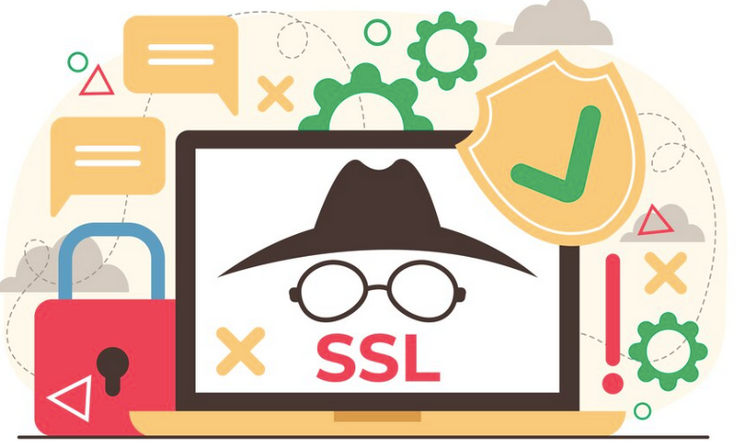In today’s digital age, security is paramount, especially when it comes to online communication and data exchange. Secure Socket Layer (SSL) certificates play a pivotal role in ensuring that data transmitted between a user’s web browser and a website’s server remains encrypted and secure. However, encountering SSL protocol errors can be a frustrating experience for both website owners and visitors. In this comprehensive guide, we’ll explore SSL protocol errors, their common causes, solutions, and best practices for preventing them.
What is SSL and Why is it Important?
SSL Certificate is a standard security protocol that establishes a secure connection between a user’s web browser and a web server. It ensures that data transmitted between the two endpoints is encrypted, making it difficult for malicious actors to intercept or tamper with the information. SSL is essential for:
- Data Privacy: SSL protects sensitive information such as login credentials, credit card details, and personal data from being exposed to potential eavesdroppers.
- Trustworthiness: Websites with SSL certificates display a padlock icon or “https://” in the address bar, signifying a secure connection. This builds trust with visitors and customers.
- SEO: Search engines prioritize secure websites in their rankings, making SSL certificates beneficial for SEO.
Common SSL Protocol Errors
SSL protocol errors can manifest in various ways, leading to a less-than-optimal user experience. Here are some common SSL protocol errors:
- SSL/TLS Handshake Failed: This error occurs during the initial handshake process, often due to incompatible SSL/TLS versions or cipher suites.
- Expired SSL Certificate: When a website’s SSL certificate expires, users may encounter warnings or errors.
- Mismatched Common Name: This error occurs when the certificate’s common name doesn’t match the domain the user is trying to access.
- Incomplete SSL Chain: SSL certificates rely on a chain of trust. If any intermediate or root certificates are missing or improperly configured, users may face errors.
- Mixed Content: This error arises when a secure page loads insecure resources (e.g., images, scripts), compromising security.
- Revoked SSL Certificate: If a certificate is revoked due to security concerns, browsers will issue warnings when users try to access the site.
Read: What Is Domain Spoofing – Understanding the Threat
Common Causes and Solutions
Here are a few common causes for SSL Protocol Error and tips on how to fix them.
Mismatched Common Name
- Cause: The SSL certificate’s common name doesn’t match the domain.
- Solution: Verify that the certificate’s common name matches the domain it’s installed on. Reissue the certificate if needed.
Expired SSL Certificate
- Cause: The SSL certificate has passed its expiration date.
- Solution: Renew the SSL certificate through the certificate authority (CA) or your hosting provider and update it on the server.
Incomplete SSL Chain
- Cause: Missing or improperly configured intermediate or root certificates.
- Solution: Ensure that all necessary intermediate and root certificates are correctly configured on the server.
Mixed Content
- Cause: Loading insecure resources on a secure page.
- Solution: Review your website’s resources and update all HTTP references to HTTPS. Use tools like “Why No Padlock” to identify insecure content.
Revoked SSL Certificate
- Cause: The certificate has been revoked due to security concerns.
- Solution: Contact the certificate authority (CA) for guidance on resolving the revocation issue.
SSL/TLS Handshake Failed
- Cause: Incompatible SSL/TLS versions or cipher suites.
- Solution: Adjust your server’s SSL/TLS settings to ensure compatibility with a broader range of clients. Consider using stronger encryption methods and ciphers.
Best Practices for SSL Management and Prevention
To minimize the occurrence of SSL protocol errors and maintain a secure online environment, consider these best practices:
- Regularly Monitor SSL Certificates: Implement monitoring tools to track the expiration dates of SSL certificates and receive timely reminders for renewals.
- Use a Reputable Certificate Authority: Choose a well-known and trusted certificate authority (CA) to issue your SSL certificates. Reputable CAs are less likely to encounter issues with revoked certificates.
- Implement Automatic Renewal: Set up automatic certificate renewal to ensure that SSL certificates are always up to date.
- Conduct Regular Security Audits: Perform security audits to identify and rectify potential vulnerabilities in your website’s SSL/TLS configuration.
- Stay Informed: Keep up to date with SSL/TLS best practices and security updates. Monitor industry developments to adapt to emerging threats.
- Implement Strict Content Security Policies: Enforce strict content security policies to prevent the loading of insecure resources on secure pages.
Conclusion
SSL protocol errors can disrupt the secure browsing experience for users and undermine trust in your website. By understanding the common causes and solutions, adopting best practices, and staying vigilant in managing SSL certificates, you can ensure a safe and seamless online environment for both you and your visitors.
Remember that SSL is an integral part of maintaining a secure online presence, and its proper implementation is essential in today’s digital landscape.

